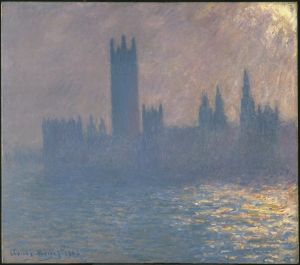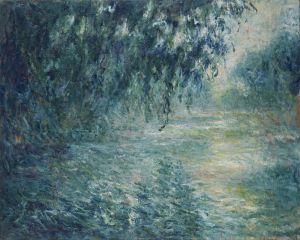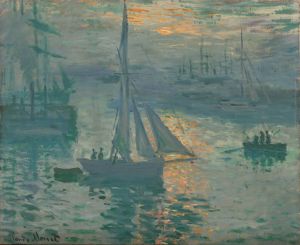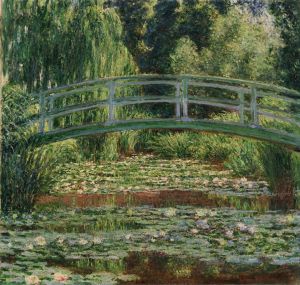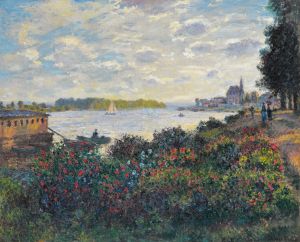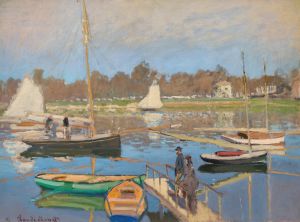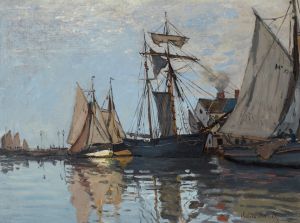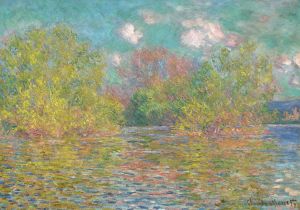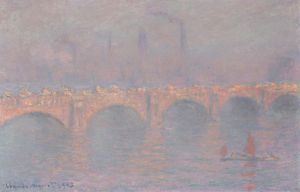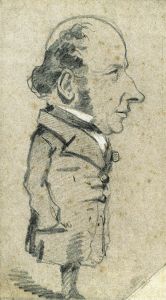
Rue de la Bavole, Honfleur
A hand-painted replica of Claude Monet’s masterpiece Rue de la Bavole, Honfleur, meticulously crafted by professional artists to capture the true essence of the original. Each piece is created with museum-quality canvas and rare mineral pigments, carefully painted by experienced artists with delicate brushstrokes and rich, layered colors to perfectly recreate the texture of the original artwork. Unlike machine-printed reproductions, this hand-painted version brings the painting to life, infused with the artist’s emotions and skill in every stroke. Whether for personal collection or home decoration, it instantly elevates the artistic atmosphere of any space.
Claude Monet, a pivotal figure in the Impressionist movement, is renowned for his ability to capture the essence of a scene through light and color. One of his lesser-known works, "Rue de la Bavole, Honfleur," exemplifies his early exploration of these themes. Painted in 1864, this artwork is a testament to Monet's burgeoning style and his keen interest in capturing the everyday life of small towns in France.
Honfleur, a charming port town in Normandy, France, has long been a source of inspiration for artists due to its picturesque landscapes and unique light. Monet, along with other artists such as Eugène Boudin and Johan Barthold Jongkind, frequently visited Honfleur to paint en plein air, a practice that was gaining popularity among artists of the time. This method allowed Monet to observe and depict the transient effects of light and atmosphere directly from nature.
"Rue de la Bavole, Honfleur" captures a quiet street scene in this quaint town. The painting is characterized by its loose brushwork and the subtle interplay of light and shadow, hallmarks of Monet's style that would later become more pronounced in his career. The composition is simple yet effective, drawing the viewer's eye through the narrow street lined with traditional Norman architecture. The muted color palette reflects the overcast sky, a common weather condition in the region, which Monet skillfully uses to create a sense of mood and place.
This painting is significant as it marks a period in Monet's career where he was still developing his unique approach to capturing light and atmosphere. Unlike his later works, which often feature vibrant colors and more abstract forms, "Rue de la Bavole, Honfleur" retains a certain level of detail and realism. This balance between realism and the emerging Impressionist style provides insight into Monet's artistic evolution.
Monet's time in Honfleur was crucial in shaping his artistic direction. The town's scenic beauty and the camaraderie with fellow artists provided a fertile ground for experimentation and growth. The influence of Boudin, in particular, is evident in Monet's early works, as Boudin was instrumental in encouraging Monet to paint outdoors and focus on the effects of light.
"Rue de la Bavole, Honfleur" is housed in a private collection, making it less accessible to the public compared to Monet's more famous works. However, it remains an important piece for understanding the development of Impressionism and Monet's role in it. The painting not only reflects the artist's early style but also serves as a historical document of Honfleur's charm during the 19th century.
In summary, "Rue de la Bavole, Honfleur" by Claude Monet is a noteworthy example of his early work that captures the serene beauty of a small French town. Through this painting, Monet's evolving style and his dedication to portraying natural light and everyday scenes are evident, laying the groundwork for his later masterpieces that would define the Impressionist movement.






